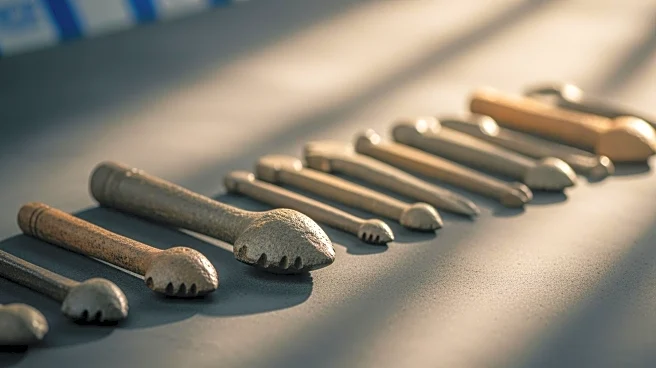What's Happening?
A study led by Elisabetta Versace at Queen Mary University of London has confirmed that humans possess a 'seventh sense' known as remote touch. This ability allows individuals to detect objects buried in sand without direct contact, similar to certain
shorebirds. The research involved experiments where participants successfully identified hidden cubes with about 70% accuracy, outperforming robotic systems trained for the same task. The study suggests that remote touch is a dormant human capability, offering insights into tactile processing.
Why It's Important?
The discovery of remote touch in humans could have significant implications for fields such as archaeology, forensics, and planetary science, where precise detection of buried objects is crucial. Understanding this sensory ability may lead to advancements in technology that enhance human capabilities in low-visibility environments. Additionally, the research highlights the potential for humans to utilize sensory extensions that have been present throughout evolution, offering new perspectives on human sensory processing.
What's Next?
Future research may focus on exploring remote touch in different granular media, such as soil or plastic beads, to understand how various factors influence this sensory ability. Scientists may also investigate training methods to enhance remote touch capabilities, which could benefit professionals working in tactile-dependent fields. The study opens avenues for developing technologies that mimic remote touch, potentially improving robotic systems used in exploration and excavation.
Beyond the Headlines
The study raises questions about the evolutionary significance of remote touch and its potential applications in enhancing human sensory capabilities. As research progresses, ethical considerations regarding the use of technology to augment human senses will need to be addressed, particularly in contexts where sensory enhancements could impact human behavior and cognition.













